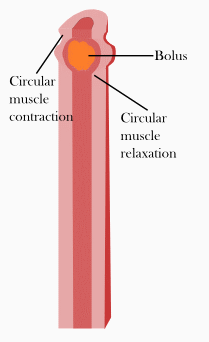So it's done
I am still in some pain, and I am burping up foam. Doc told me to try warm water instead of cold. It is less uncomfortable than the cold. One more day (maybe 2) and I hope I am back to my old self.
on 12/6/11 12:34 am - Califreakinfornia , CA
on 12/6/11 10:48 am - Califreakinfornia , CA
on 12/7/11 2:53 am - Califreakinfornia , CA
" prime " the band, but I've have always understood it to be that due to inflammation caused by the surgery itself, that it is wiser to leave the band as empty as possible because all that inflammation is going to naturally restrict any fluids and solids that go through your band.
It's really important that you do not get a fill if you are feeling the slightest bit of restriction. Give yourself plenty of time for all that inflammation to heal. I'm going to paste some lap band eating rules for you in case your interested. They make a lot of sense.
How to eat with a LAP BAND.
- A “half a cup" of food should be placed on a small plate.
- Take a small bite and chew well.
- Use a small fork or a small spoon to eat.(an oyster fork or baby spoon)
- A single bite of food should be chewed carefully for 20 seconds. This provides the opportunity to reduce that bite of food to mush.
- After chewing the food until it is mush, the patient should swallow that bite.
- Swallow, then wait a minute. The patient must wait for that bite to go completely across the band before swallowing another bite. Normally, it will take between two and six peristaltic waves passing down the esophagus, which can take up to one minute.
- A meal should not go on for more than 20 minutes. At one bite per minute, that is just 20 small bites. The patient probably will not finish the “half a cup" of food in this time. The patient should throw away the rest of the food.
- It takes between two and six squeezes to get a single bite of food across the band
- The patient should not be hungry after 20 bites or less.
- After undergoing LAGB, the patient should never expect to feel full. Feeling full means stasis of food above the band and distension of that important part of the LECS above the band. This destroys the LECS, the mechanism that enables optimal eating behavior and appetite control. A patient should always keep this process in mind.

- If the patient finds that after eating the “half a cup" of food he or she is still hungry, he or she should review his or her eating practices, correct the errors, and consider the need for further adjustment of the band. If this is occurring, it is usually an indication that the patient is not in the green zone.
There are three common eating errors:
1.The patient is not chewing the food adequately. Food must be reduced to mush before swallowing. If it cannot be reduced to mu**** is better for the patient to spit it out (discreetly) than to swallow it.
2. The patient is eating too quickly. Each bite of food should be completely squeezed across the band before the second bite arrives.
3. The patient is taking bites that are too big to pass through the band.
Each of these errors leads to a build up of food above the band where there is no existing space to accommodate it. Space is then created by enlargement of the small section of stomach or by enlargement of the distal esophagus, both of which can compromise the elegant structure of the LECS. If the LECS is stretched, it cannot squeeze. Without the squeezing, satiation is not induced. When satiation is not induced, hunger persists, more eating occurs, and stretching continues. If our patient continues this each day for a year, it is inevitable that chronic enlargement will occur, the physiological basis for satiety and satiation is harmed, and stasis, reflux, heartburn, and vomiting supervene.
Esophagus
After food is chewed into a bolus, it is swallowed and moved through the esophagus. Smooth muscles contract behind the bolus to prevent it from being squeezed back into the mouth. Then rhythmic, unidirectional waves of contractions will work to rapidly force the food into the stomach. This process works in one direction only and its sole purpose is to move food from the mouth into the stomach.[2]
In the esophagus, two types of peristalsis occur.

- First, there is a primary peristaltic wave which occurs when the bolus enters the esophagus during swallowing. The primary peristaltic wave forces the bolus down the esophagus and into the stomach in a wave lasting about 8–9 seconds. The wave travels down to the stomach even if the bolus of food descends at a greater rate than the wave itself, and will continue even if for some reason the bolus gets stuck further up the esophagus.
- In the event that the bolus gets stuck or moves slower than the primary peristaltic wave (as can happen when it is poorly lubricated), stretch receptors in the esophageal lining are stimulated and a local reflex response causes a secondary peristaltic wave around the bolus, forcing it further down the esophagus, and these secondary waves will continue indefinitely until the bolus enters the stomach.
Esophageal peristalsis is typically assessed by performing an esophageal motility study.
on 12/7/11 10:43 pm - Califreakinfornia , CA

 . I usually just cry like a lunatic for no apparent reason - it is just a side affect for me.
. I usually just cry like a lunatic for no apparent reason - it is just a side affect for me.

